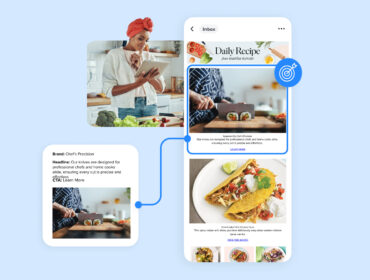Building a holistic email monetization strategy with your audiences at its center
Email is changing the way companies educate and engage their customers. It has the benefit of being a time-honored channel (the first email was sent in 1971) while also being flush with opportunities for driving data-fueled innovation.
So publishers and brands can use email to meet customers where they are today and where they’re ready to be tomorrow.
Peter Chang, CRO of Likemind, knows this well. To help others harness the power of email, he shared his insights into curating audience experiences with email newsletters and building a holistic email monetization strategy.
What makes email the preferred channel for Likemind?
Out of all the marketing channels available today, Likemind see email as the most valuable. The reason? It puts the power in the users’ hands.
“Email is an opt-in environment where the users choose to be a part of our user base,” said Chang. “They can choose to subscribe to all of our brands, some of our brands, or even, within the brands, just the different types of communications or content experiences that they want. So they have full control.”
According to its metrics, Likemind can also clearly see that those who opt-in are active, engaged, and captive audience members. This opens up important opportunities for building relationships and driving revenue through monetization.
How do you drive awareness and engagement with content?
Email is full of high-quality data that Likemind uses to identify audiences and personalize content. And they’re not just talking about open rates and clickthrough rates, but deeper data signals that paint a clear picture of readers’ interests.
“We can see if a user has an interest in home & garden content vs. travel content vs. sports based on what they’re clicking on and what they’re interested in,” Chang said. “We can even see at a basic level, ‘Hey, does a user like slideshows, do they like quizzes, or do they like immersive content?'”
Likemind can then use this data to provide relevant article recommendations in email newsletters and customize website content to match their preferences. The company can also segment audiences to send product launch announcements, reaching only those most interested in the new offerings.
As Chang said, “Using data to give users – especially in a learning environment – a very curated type of experience is just going to increase their engagement and retain them.”
How do your values translate into building your audience?
Likemind’s core values are connection, curiosity, intention, and optimism. Disseminating those values starts with the employees and team members.
“We really try to make sure that our team members take these values and live them both at work and, if they can, in their personal lives,” Chang said.
Likemind’s people & culture team made efforts to support employees through difficult situations and keep teams connected during the pandemic. This included hosting Zoom happy hours and cooking classes and having clinical psychologists share techniques for improving mental health.
“It was a very safe, open environment where team members could share and ask questions, so we can all connect a little bit more and understand what people are going through,” Chang said. “The level of connectedness of our team today, I believe, is actually stronger than what it was before the pandemic even though none of us have been in the same room with each other in over a year.”
This connectedness then extends to customer relationships.
“We get a lot of emails back to us, and by and large, they’re extremely positive,” said Chang. “So in spite of everything that’s happened in the last year, I really do think we have been providing the service to our users that we can all be proud of.”
Why is there a renewed interest in email?
Even though email has been around for decades, it’s experiencing a renaissance: email engagement increased by a whopping 200% during the pandemic.
“It’s now a new content delivery vehicle […] – back in the day, it was just a quick communication medium,” Chang said. “Obviously, where there are eyeballs and great content, brands want to be associated with that.”
Email has also emerged as a prime solution to identity in the wake of the death of the third-party cookie. It’s a direct-to-consumer channel full of first-party data that publishers and brands can own and activate.
“It’s opt-in and it’s addressable – that really changes the game in terms of identifying users,” Chang said. “I’d rather have an environment where the end user has the control […] rather than being force-fed something.”
Chang has three key tips for succeeding with email newsletter monetization. The first is to pick a great partner. This means one that understands your holistic user journey and won’t just pump your email full of ads. That’s just how LiveIntent operates.
“We’ve worked with LiveIntent almost since the beginning,” Chang said. “We’ve enjoyed our partnership because we can talk on high-level strategy and you can advise on things that are downstream, even though really your focus tactically is more in the email.”
The second piece of advice is to test scientifically. But be sure only to change one element of your email strategy each time, so you know how to attribute your findings. The third tip is to be patient and give your tests time to show results.
“If you’re a company that has like a weekly email cadence […] run the test for the entire cycle because different things on different days are going to have effects,” Chang said.
Overall, always remember to make your users the number-one priority. You can optimize your emails to increase revenue, but if you frustrate or confuse your readers, it won’t be worth it in the end.
As Chang said, “It’s about finding that balance.”
Liked this content? Sign up for our newsletter for updates on future Real Time Banter episodes and more great stuff.


